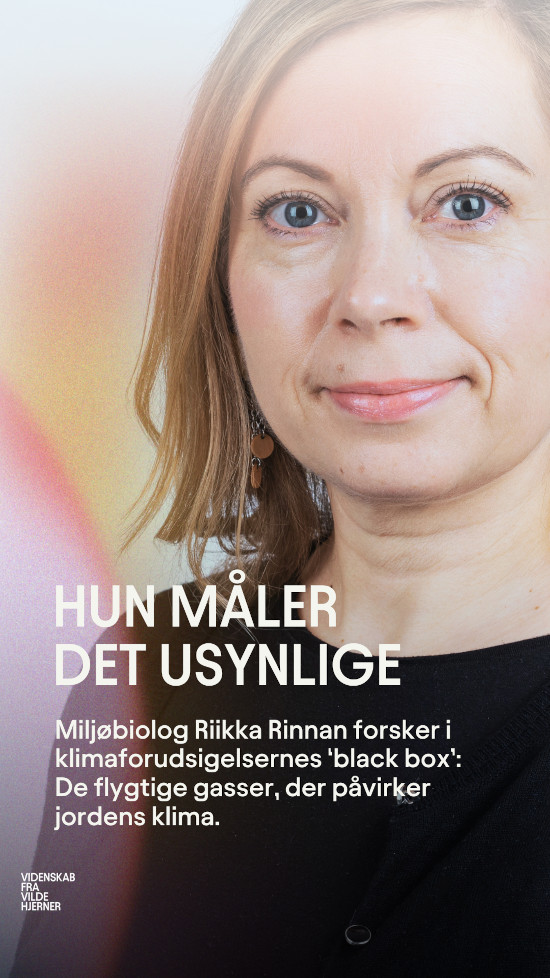New podcast with Riikka Rinnan

VOLT's centerleder, Professor Riikka Rinnan, var for nylig inviteret til at deltage i en dansk podcast "Videnskab fra Vilde Hjerner", hvor hun diskuterede centerets formål samt vanskelighederne ved at studere VOC gasser (flygtige organiske forbindelser). Hør hele podcasten HER.
(English below with highlights from the podcast)
VOLT’s center director, Professor Riikka Rinnan, was recently invited to participate in a Danish podcast ‘Videnskab fra Vilde Hjerner’ (Science from Incredible Brains) where she discussed the purpose of the center as well as the difficulties of studying VOCs (Volatile Organic Compounds).
The research here at VOLT can be described as “quite nerdy,” according to Riikka; it looks into the creation and consumption of different VOCs, of which there are thousands.
VOCs can be compared to greenhouse gases in regards to their climate relevance; however, they are relevant in a different way. VOCs are quick to create reactions with other compounds found in the atmosphere, much faster than greenhouse gasses such as methane, thus prolonging the time methane is found in the air and adversely affecting the climate. Furthermore, VOCs can create pollution when they mix with human-made pollution in the atmosphere. Conversely, VOCs can create small particles that can turn into droplets reflecting the radiation of the sun, and these droplets can, in large quantities, turn into clouds, thus providing a cooling effect. Due to the reactive nature of VOCs, the effects of them are often seen regionally and locally.
Consequently, you cannot do research on climate change without including the VOCs. The research from the center provides data that can then be used by climate scientists and atmospheric chemists, e.g., for ecosystem and climate change models that can couple the global atmospheric chemistry with the local VOCs, looking into how the temperature is affected, thereby going from a micro scale to a global scale.
The research here at VOLT has a special focus on the Arctic, and it is for good reason, as the Arctic is warming up faster and greater than the global average. Furthermore, Arctic ecosystems are relatively simple; they are small and include few species, thereby allowing the research to be performed at a miniature scale, using the Arctic ecosystem as a model system. Even though it is possible to take pieces of the tundra home to the labs and perform experiments under controlled conditions, Riikka Rinnan thinks it is important to get data from the entire ecosystem as the environment inevitably changes in the lab.
This brought its own difficulties, as it meant transporting expensive and heavy lab equipment not meant for fieldwork into the tundra. Not knowing whether the measurements would even be above detection, they transported the PTR-MS (proton-transfer-reaction mass spectrometer) via helicopter, lowered it down onto a pallet in the tundra, and built a small cabin around it. “High-risk, high-gain research," Riikka calls it. Luckily, all that work was not in vain; the data showed that there is a high release of VOCs from the Arctic tundra well above detection level, and most importantly, when the temperature increases by 2 oC, the VOC gas release doubles or more. This is only one piece of the puzzle, as mosses and lichens are not necessarily included in the ecosystem models.
The dream for Riikka Rinnan is to be able to answer two major questions: how all the different VOC gases fit together and where they belong in the big puzzle that is our climate.
